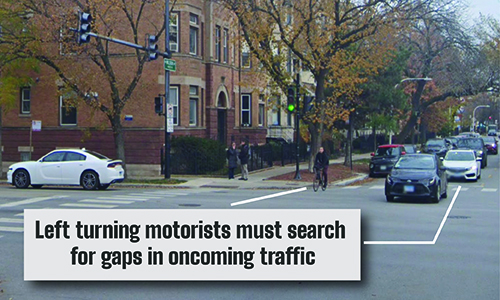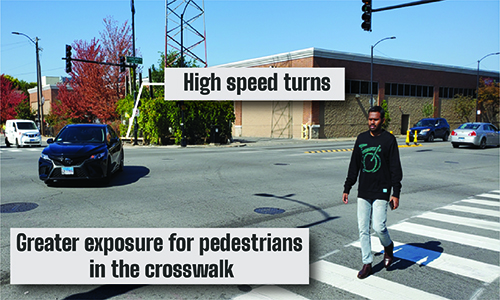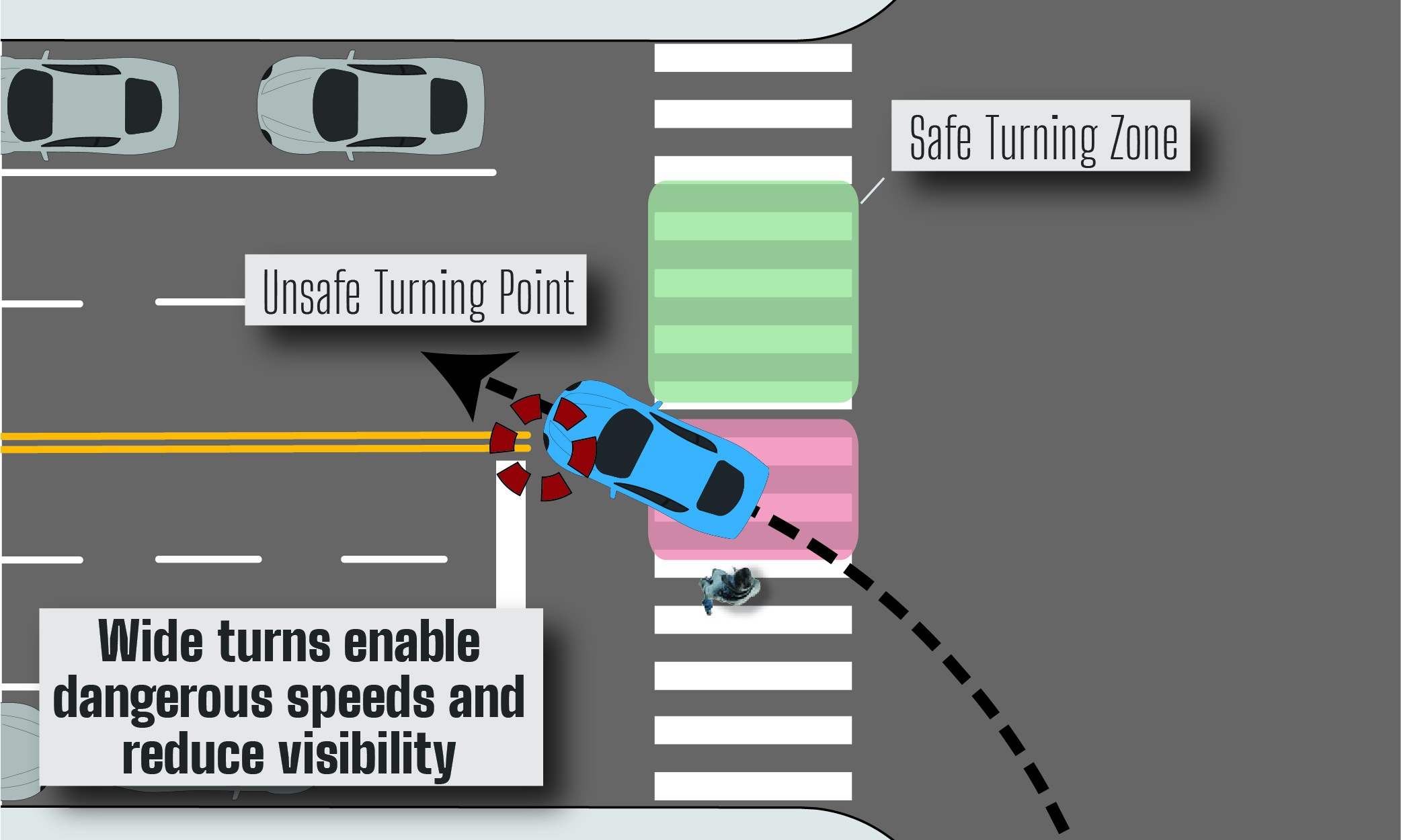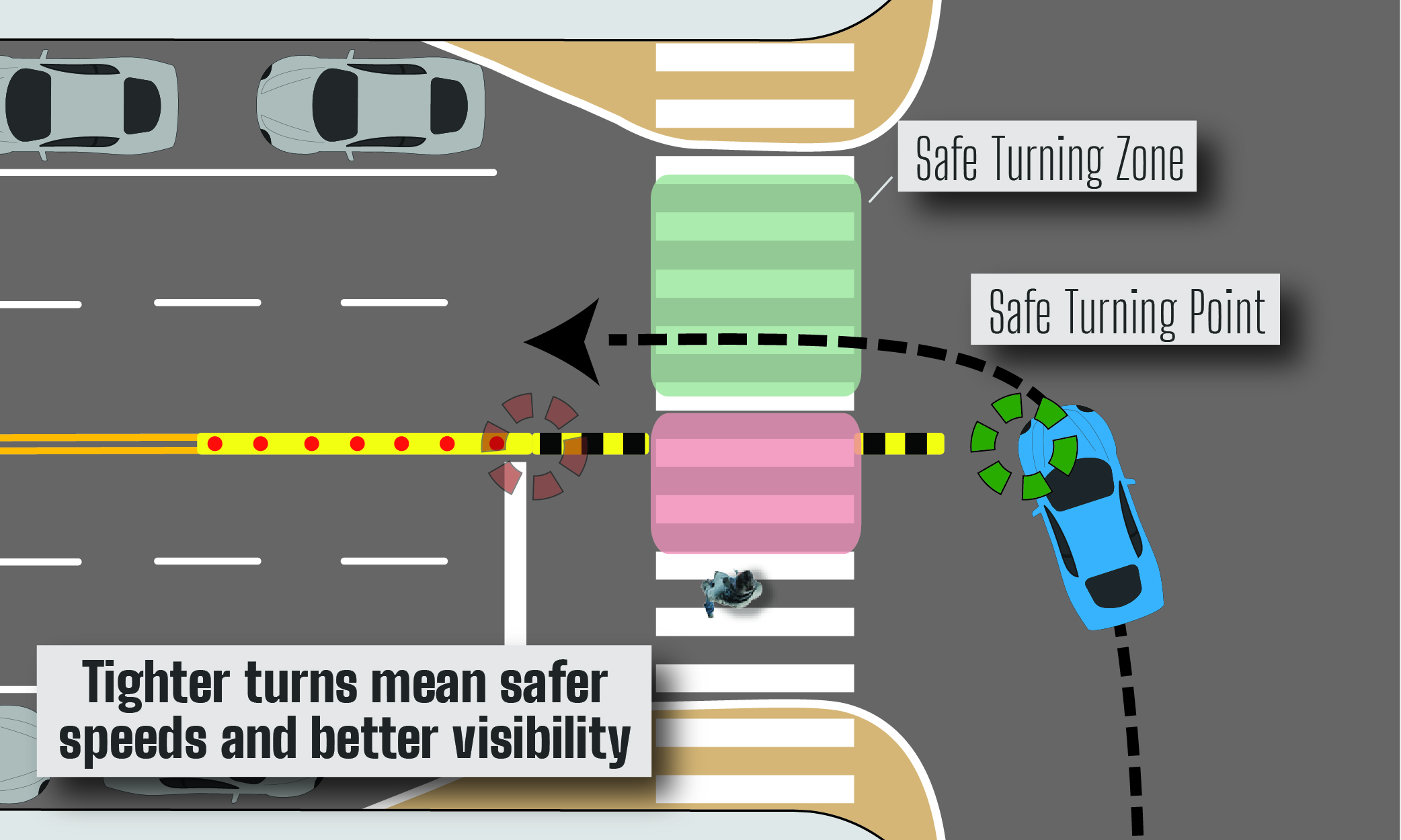Left Turn Traffic Calming
 Left Turn Traffic Calming
Left Turn Traffic Calming

Left Turn Traffic Calming (LTTC) treatments are simple intersection upgrades that boost pedestrian safety and result in safter turning behaviors from drivers. These projects enable CDOT to address crash trends at intersections. In Chicago between 2017 to 2021 left turning motorists were involved in 40% of crashes where a pedestrian was severely injured or killed at an intersection.
LTTC treatments “harden” the centerline at an intersection with raised curbs, bollards, and rubber speed bumps. Some locations may call for a rubber speed bump extending into the intersection or shortened pedestrian crossing distances with paint-and-post curb extensions.
This design discourages left turning drivers from cutting across the centerline, guiding them to turn at a safer angle with slower speeds and better visibility of people walking. This way, drivers more intuitively complete their left turns within the safe turning zone, reducing conflicts with pedestrians.
Reducing traffic crashes is an urgent matter for CDOT. In 2021, more than 500 people were seriously injured or killed in traffic crashes while walking in Chicago. Between 2017 and 2021, left turning motorists were involved in 40% of crashes where a pedestrian was severely injured or killed at an intersection. Left turns are more complex than right turns. Drivers must search for gaps in oncoming traffic, pedestrians can be blocked from view by the vehicle’s “A-pillar”, and the wider turning path enables higher speeds.



CDOT has installed LTTC at 18 intersections across the city, including neighborhoods such as Belmont Cragin, Englewood, Humboldt Park, and Ravenswood. Observations at eight pilot locations showed 97% of vehicles turning within the Safe Turning Zone, up from 73% before the installations.


Before installation:
73%
After installation:
94%
Before installation:
73%
After installation:
97%
24%
24%
CDOT has installed LTTC at 18 intersections across the city, including neighborhoods such as River North, Belmont Cragin, Englewood, Humboldt Park, and Ravenswood. Dozens more locations are targeted for installation in 2023.
Image: 71st St and Ashland Ave


